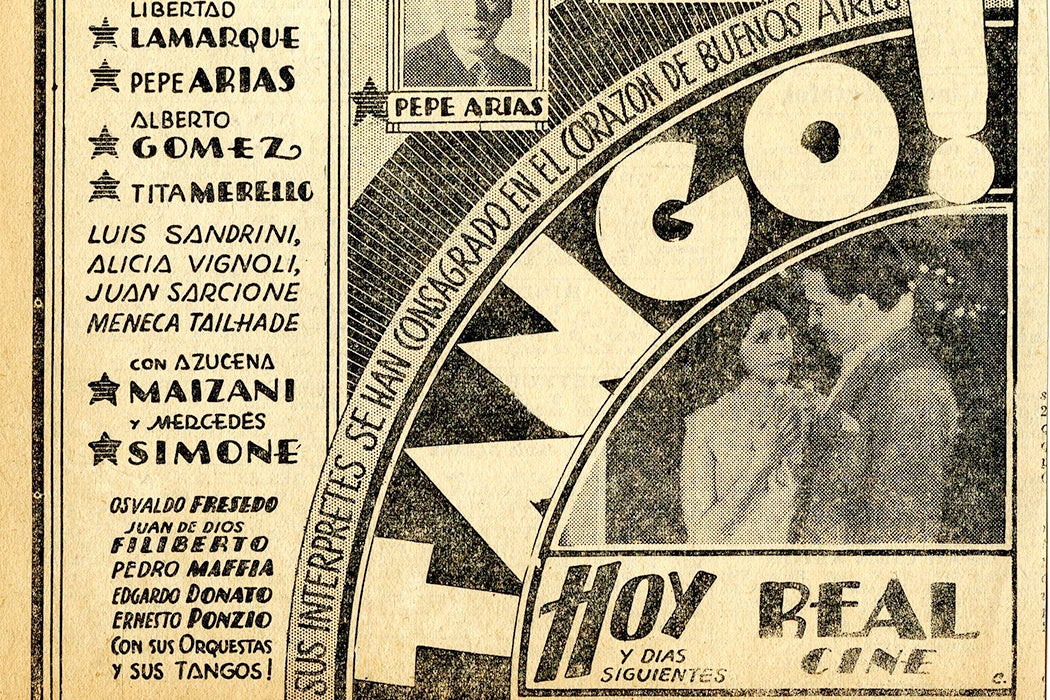“I am the tango, gentlemen.”
When Argentine singer Azucena Maizani introduced her performance with these words, she wasn’t just being provocative, argues Latin American studies scholar Sirena Pellarolo, she was also helping to change tango culture.
In the 1920s and ’30s, tango was “monopolized strictly by men,” and Maizani’s statement made her one of the many women tango singers who claimed their own space in the music. And more than that, Pellarolo writes: the “bold exposure of their femininity on stages traditionally reserved for men and their occasional use of drag” marked a change in how women performed and were portrayed in the genre.
Women were long prominent in tango, but not always in flattering ways. Songs often portrayed them as “dangerous social parasites, betrayers of their old lovers, their barrio, their values, and their social class,” according to Pellarolo. But women performers known as cancionistas pushed the genre forward. Cancionistas became public figures and models for Argentine femininity, Pellarolo explains. Their performances enraptured audiences of women, who saw themselves reflected on stage. And from the stage, the cancionistas found their own means of release. Performance was a form of freedom, Pellarolo writes, a reprieve from the “precarious employment opportunities [for those] who refused to accept outdated gender roles at the onset of capitalism.”
Although tango became big business, it started as a dance mainly done in “brothels around Buenos Aires port, among immigrants living in the port area,” writes ethnomusicologist Moshe Morad. Its exact date of origin is unknown, but the dance likely began at the end of the nineteenth century. The accompanying music is a combination of the region’s cultures, a blending of “rural milongas (dances), Spanish and Italian tunes, and the syncopated rhythms of the African slaves’ candombes”—a style of music played on percussion, Pellarolo writes.
Tango songs, which added lyrics to the dance tunes, saw their popularity rise beginning in 1918. They would form the basis of tango storytelling for hundreds of songs—songs that “address the upwardly mobile woman from a first-person male persona—a resentful ex-lover, who laments not only the loss of the sentimental liaison, but perhaps more importantly the economic support provided by the woman,” Pellarolo writes.
While the songs portrayed women as social climbers leaving the safety of home, women performers increasingly found financial security through them. But that came with adherence to more rigid gender roles. Popular women performers often wrote songs, too, but often weren’t given credit. One singer, Maria Luisa Carnelli, found a way around that by using male pseudonyms “to ensure that her compositions would be fairly marketed in an industry controlled by men.”
Weekly Newsletter
Azucena Maizani also wrote several popular songs. In her rejection of the staid gender roles of the genre, she was not only fully credited for her work under her name, she also performed in a “male persona,” Pellarolo writes. In the 1933 film Tango!, the “defiantly butch Azucena stand[s] center-stage, clad in a smart pin-striped double-breasted suit.”
Music and politics often intertwine, and as Pellarolo notes, the women who claimed their space in tango weren’t just innovative musicians; they also “subverted patriarchal notions of gender, national, and class identities and staged a space of decolonizing possibility.”







